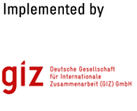Countries

In Africa, over 2.5 million African farmers grow about 57% of the world's cashews. MOVE-ComCashew has carefully selected six African countries for its interventions:
A careful analysis of the harvesting calendar regarding the selected MOVE-ComCashew countries has shown a potential for an almost year round cashew supply: with the exception of August and September, raw cashew nuts (RCN) are available anytime of the year in at least one of the selected MOVE-ComCashew countries. It is the long-term vision of the project that strategic purchasing between African countries would make it possible for all stakeholders of the cashew value chain to equally benefit from development. Strategic purchasing reduces working capital and optimizes capacity utilization for RCN processing.
Processors could buy small quantities for processing for four to five months annually and import the rest from other African countries in the counter season. Farmers could thus have income in the so-called "hungry season” when food crops cannot be harvested.
The Cashew Sector in Burkina Faso

The Government of Burkina Faso in 1997 started a project with the aim of planting one million cashew trees to promote the agricultural sector. This resulted in a production increase since 2000. In Burkina Faso over 50,000 households are involved in the cultivation of cashew nuts with their cultivating area stretching over a total of 389,000 hectares as of 2021. About 65,000 households in Burkina Faso are involved in the cultivation of cashew nuts. 97% are located in the Cascades, Centre-Ouest Hauts-Bassins and Sud-Ouest regions. Agrofood businesses in the past years, have established large cashew plantations (of up to 300 hectares) with most of them being in the Ziro and Sissili provinces. The raw cashew nuts are mostly exported to India and Vietnam.
Read more about the Cashew sector in Burkina Faso
Contact
Cynthia Al-Da Benon
al-da.benon@giz.de
The Cashew Sector in Côte d’Ivoire

For Côte d’Ivoire the cashew sector offers enormous social, ecological and economic potential. In Côte d’Ivoire over 1,028,172 Metric tons of Raw Cashew Nuts were recorded in 2022. Côte d’Ivoire is serving as an example to West African countries and encourages other countries to also focus on the nut and apple transformation such as having by-products from cashew. Cashew in Côte d’Ivoire is grown by around 330,000 farmers, grouped into 20 cooperatives. The sector feeds an estimated 1.5 million people, directly and indirectly. Cashews are mainly cultivated in the Savannah region, found in the northern part of the country and covers the northern half from the border with Guinea to the border with Ghana. Cashew, in Côte d’Ivoire, was introduced to control soil erosion and for reforestation of savannah woodlands. Today, around 90% of the Ivorian cashew production is exported as Raw Cashew Nuts (RCN) providing the country with considerable export revenue.
Read more about the Cashew sector in Côte d’Ivoire
Contact
Mary Adzanyo
mary.adzanyo@giz.de
The Cashew Sector in Ghana

Agriculture is the predominant sector in Ghana’s economy. It contributes to 22% of Gross Domestic Product (GDP) and employs about 45% of the labour force. The cashew sub-sector has gained momentum as recognition from the State is gradually increasing. Cashew is a major source of income for thousands of small-holder farmers and supports farmers’ livelihoods especially during the lean season. In Ghana, over 400,000 households are involved in the cultivation of cashew nuts with a national production volume of Raw Cashew Nuts of 200,00 metric tons in 2022. Cashew grows Bono , Bono East, Ahafo, Northern, Ashanti, Western, Volta, Eastern, Upper West, Central, Upper, Savannah, North East and Oti.
One factor which may be contributing to the high yields in Ghana is the source and quality of planting materials. Farmers have reported using planting materials from government and research institutions which are mostly improved varieties. There are a number of processing plants mainly based in the Brong Ahafo Region.
Read more about the Cashew sector in Ghana
Contact
Beate Weiskopf
beate.weiskopf@giz.de
The Cashew Sector in Sierra Leone

Cashew is an emerging cash crop with the potential to make a significant economic impact in Sierra Leone, both at household level and as an export commodity, given its expanding market and constantly increasing value and demand. With a low requirement of inputs, cashew is an ideal crop for smallholders and also a good tree crop for soil conservation and climate change mitigation. Sierra Leone has a high potential for cashew crop comparable to Guinea Bissau. Cashew is considered as one of the upcoming tree crops in Sierra Leone and the government has declared cashew nut as economic cash crop in the country to diversify the export base of the economy. This is why the government of Sierra Leone, through the Ministry of Agriculture and Forestry (MAF), has started to collaborate with ComCashew in 2017. The first activities are in relation to the identification of elite mother trees and establishment of polyclonal gardens. Existing plantations are spread among Northern, eastern, and southern provinces.
Read more about the Cashew sector in Sierra Leone
Contact
Salifou Issaka Mohammed
issaka.salifou@giz.de
The Cashew Sector in Nigeria

Nigeria became an implementing country of MOVE-ComCashew in 2022. The country is among the largest producers of cashews in the world. Nigeria has over 400,000 cashew producers with 12 processors of which 7 are operational. Cashew growing States are; Ogun, Ondo, Kwara, Kogi, Oyo, Osun, Niger, Abuja, Nassarawa, Benue,Cross River, Abuja, Ekiti, Lagos, Taraba, Akwa Ibom, Imo, Ebonyi, Enugu, Anambra, and Delta.
Read more about the Cashew sector in Nigeria
Contact
Nunana Addo
nunana.addo@giz.de
The Cashew Sector in Senegal

Senegal became an implementing country of MOVE-ComCashew last year in 2023. In Senegal, more than 35,000 households are involved in cashew cultivation and the cultivated area extends over a total of 16,884.74 hectares in 2023. Cashew growing Regions are Ziguinchor, Kolda, Sédhiou and Fatick.
Contact
Beate Weiskopf
beate.weiskopf@giz.de





